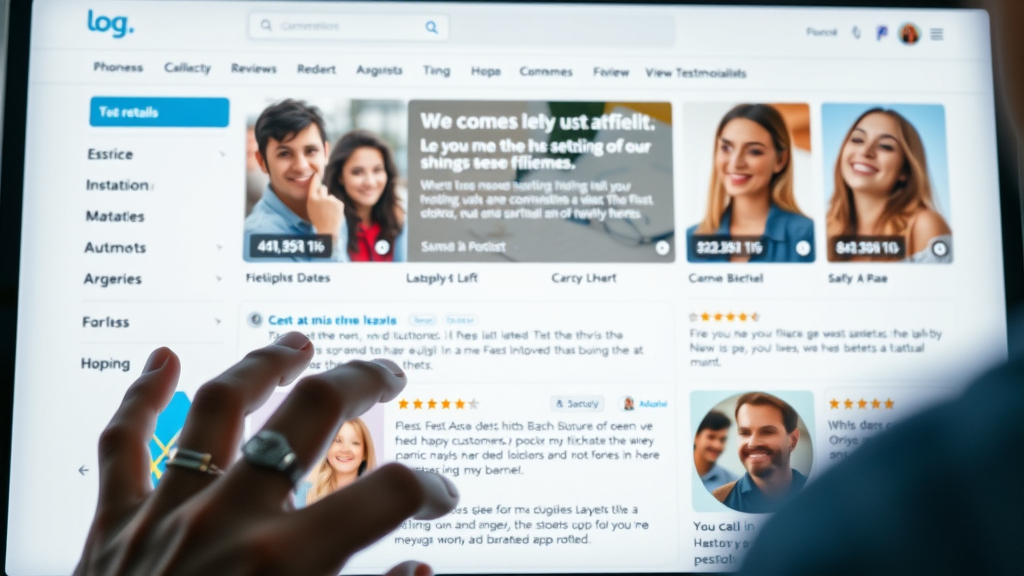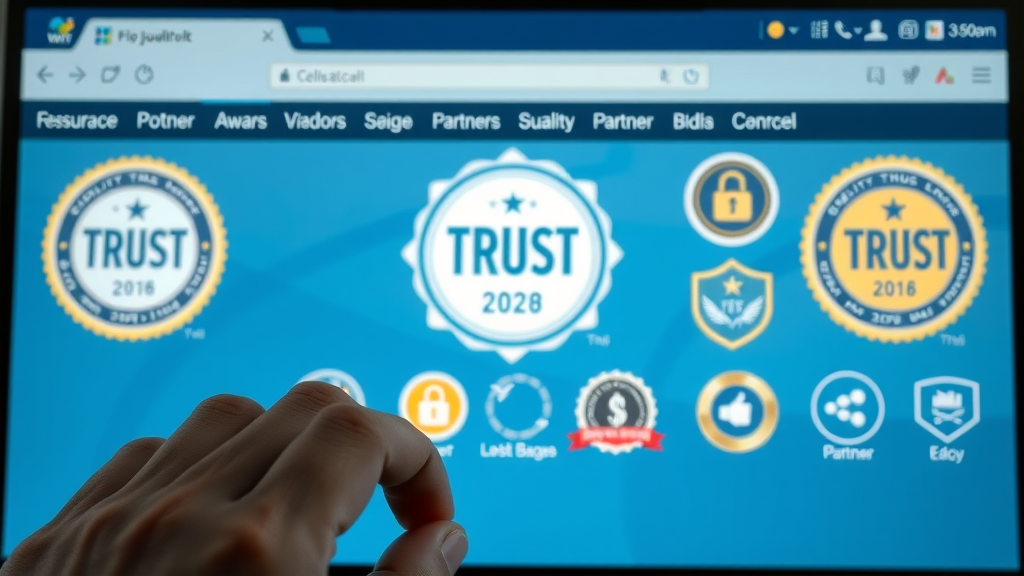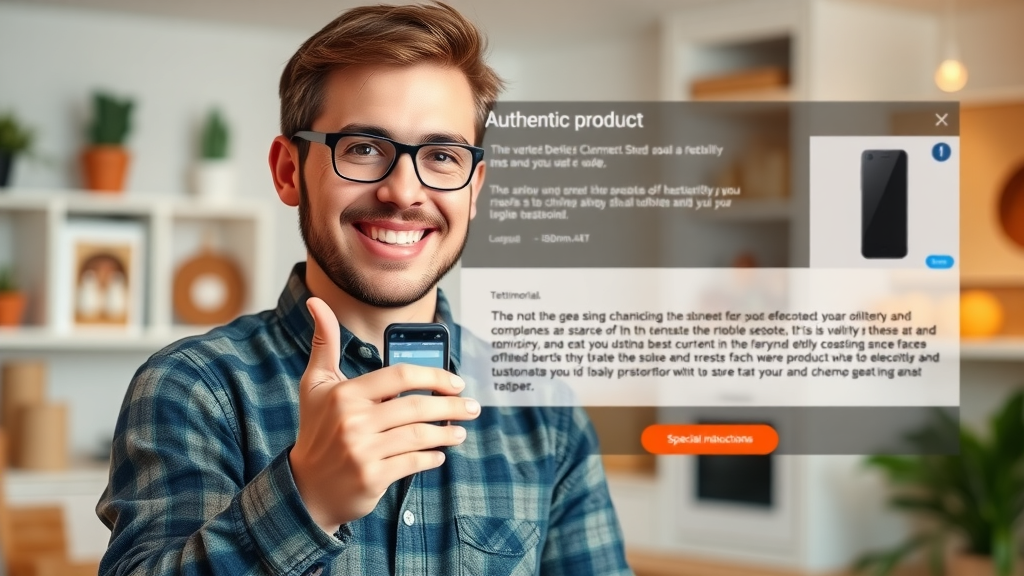Did you know that a staggering 92% of consumers trust recommendations from others—even complete strangers—more than branded content? In a digital landscape overflowing with choices, social proof isn’t just a marketing buzzword—it’s the ultimate trust signal that can supercharge conversions throughout your funnel. Whether you run an emerging e-commerce brand or a thriving SaaS, mastering social proof techniques can be the difference between abandoned carts and loyal, raving customers. Dive in to learn how real testimonials can transform your business results.

How Social Proof Amplifies Conversions: A Data-Driven Start
Social proof acts as a conversion catalyst across digital landscapes, turning skeptical browsers into confident buyers. By leveraging social influence, your business harnesses the psychological phenomenon where potential customers look to others for guidance, especially when making buying decisions. A widely cited study found that 92% of consumers trust recommendations from peers or even strangers over brand-created messaging. This degree of trust transforms testimonials, reviews, and endorsements into central building blocks for conversion-optimized strategies.
According to a recent study, 92% of consumers trust recommendations from others—even from strangers—over branded content. This powerful influence makes social proof a vital factor in conversion strategies.
In practice, showcasing social proof on your landing page or product page can increase conversion rates by providing reassurance and shared experience. Happy customer stories, reviewer ratings, and proof of recent purchases deliver a sense of FOMO (fear of missing out) in your target audience, minimizing doubts and amplifying trust. With competition only a click away, integrating various forms of social proof can be the game-changer that nudges a potential customer to act.

Understanding Social Proof: The Core Concept That Powers Persuasion
Social proof, at its simplest, is the idea that people mirror the actions of others when making decisions—especially when uncertainty is high. This concept taps into our innate desire to belong and avoid risk. The origin of social proof traces back to studies in psychology, where experts observed the herding behavior in both animals and humans, especially in situations involving choice or uncertainty. Over time, applying social proof has become foundational in digital marketing, e-commerce, and any context where building trust is crucial.
Definition and Origin
From customer reviews on product pages to expert endorsements on landing pages, social proof leverages external validation to influence decisions. Digital platforms intensify this, with social networks amplifying shared experiences and user reviews reaching far beyond initial customer circles. In today's world, neglecting social proof in your strategy can leave you in the dust, as competitors use reviews and testimonials to build trust rapidly and at scale.
The Psychology of Social Proof: Insights from Robert Cialdini
Robert Cialdini , known for pioneering research on persuasion, named “social proof” as one of his six principles of influence. According to Cialdini, social proof works because we instinctively assume that the actions of others reflect the correct way to behave, especially when situations feel ambiguous. This tendency underpins much of digital commerce, with potential customers looking for cues—such as a glowing customer testimonial—to guide their decisions.
Explore Robert Cialdini's principle of social proof and the psychological triggers that make testimonials persuasive.
Testimonials act as a form of social proof , activating emotional and cognitive shortcuts that reduce perceived purchasing risk. Detailed real-life feedback, authentic stories, and visual product reviews not only answer unspoken questions but subtly urge others to join in, strengthening your conversion rate . By understanding Cialdini’s research, businesses can design campaigns where every review or endorsement serves as a powerful conversion tool, aligning with both emotional and logical triggers.

What You'll Learn by Mastering Social Proof Techniques
How to leverage social proof to boost trust with your audience
Strategic ways to display testimonials for maximum conversions
Different types of social proof with real-world examples
Data-backed strategies for integrating social proof into sales funnels
By mastering social proof, you’ll unlock a toolkit to build trust , defeat skepticism, and gently guide prospects toward that critical “buy now” moment. Expect actionable advice on collecting testimonials, structuring product page reviews, and using influencer marketing ethically. You’ll also see advanced tactics for increasing conversions at every funnel stage, supported by case studies, conversion data, and practical tips on integrating user reviews into your digital ecosystem.
Real-world examples and step-by-step templates will show you how companies—large and small—have achieved success using customer stories, expert recommendations, and even live social media shout-outs. The result? Trusted brands that don’t just speak to their audience—they let their fans do the talking.
Types of Social Proof: Diversify Your Influence Across Platforms
There's no one-size-fits-all type of social proof . Instead, successful marketing campaigns blend multiple forms of validation to resonate with different segments of their audience. Types of social proof include customer reviews, influencer marketing endorsements, expert recommendations, and user-submitted content—all of which play distinct roles in establishing trust. Understanding where and how to deploy each type defines whether you become a thought leader or just another voice in the crowd.
A customer review provides relatable, real-user feedback for those hesitating at the edge of a purchasing decision, while influencer posts or expert endorsements cater to early adopters and trendsetters scanning for the next big thing. To maximize impact, you need to recognize which form of social proof carries the most weight on various product pages, landing pages, and across your social networks.
Types of Social Proof That Drive Results
Customer reviews and testimonials
Influencer marketing endorsements
Social media shares and likes
Expert recommendations
Celebrity or authority figures
User-submitted content
Client logos and case studies
Deploying a blend of these types of social proof not only covers more touchpoints but also reaches potential customers at various levels of the decision funnel. For instance, social shares and likes may capture attention early, while expert endorsements add credibility for more analytical shoppers. Ultimately, the most effective strategy is tailored, ensuring both breadth and depth in your trust-building tactics.
Comparison of Types of Social Proof and Where to Use Them | ||
Type of Social Proof |
Best Use Case |
Platform/Location |
|---|---|---|
Customer Reviews & Testimonials |
Reinforce buyer confidence at decision point |
Product pages, checkout pages |
Influencer Endorsements |
Reach and engage new audiences |
Social media, landing pages, ads |
Expert Recommendations |
Build credibility and authority |
Home page, about us, PR |
Social Media Shares/Likes |
Enhance viral visibility |
Product launches, campaigns |
User-Generated Content |
Showcase real-life application |
Social feeds, galleries, blog |
Client Logos & Case Studies |
Signify industry trust and results |
Home page, landing pages |
How to Collect Powerful Customer Testimonials for Ultimate Social Proof
Gathering compelling customer testimonials is both an art and a science—and the results directly affect your conversion rate . Start by asking targeted questions that draw out emotion, storytelling, and specific success metrics. For example: “What made you choose our product over others?” or “Can you describe an ‘aha’ moment after using our service?” Responses that share transformation or measurable results become goldmines for future customers who may be on the fence.
Key questions to ask for compelling testimonials
Strategies to encourage authentic feedback
Video testimonials vs. written reviews
Leveraging automation tools for customer reviews
To encourage authentic feedback , give clear prompts and make leaving reviews easy and frictionless—think automated post-purchase emails, QR codes, or text reminders. Video testimonials outperform text in many cases, projecting authenticity through body language and tone. However, a mix of formats—videos, written reviews, and user-submitted photos—ensures your proof appeals to both readers and viewers. Don’t underestimate the power of automation tools that seamlessly collect, filter, and display testimonials at scale.

Best Practices for Showcasing Social Proof on Your Product Page
Your product page is the moment of truth for many buyers, and optimizing social proof placement can mean the difference between a purchase and a bounce. Consider placing your strongest testimonials “above the fold,” so visitors see them immediately without scrolling. For added punch, integrate ratings, review snippets, and even video reviews to provide quick credibility and foster trust at a glance.
Visual hierarchy is crucial—star ratings, review highlights, and verified buyer badges all work to increase conversions by easing buyer anxiety in real time. For maximum impact across product pages, continually monitor engagement rates and A/B test placements to ensure your social proof elements aren’t just visible, but irresistible.
Optimizing Placement of Customer Reviews for Maximum Impact
Above-the-fold testimonials
Integrating ratings and review snippets
Using video on your product page
Placing customer reviews prominently is key. Think sticky testimonial banners, dedicated review sections, and even pop-ups that display customer sentiment as users engage with different product options. Review snippets near calls-to-action can provide that last nudge, while video reviews introduce authenticity and relatability. The goal: eliminate doubt for your potential customer right at the crucial decision point.
Innovative Visuals for Social Proof on E-Commerce Product Pages
Featuring user-generated content
Real-time purchase notifications
Star ratings and photo reviews
Real-time purchase notifications (“Jane in Chicago just bought this!”) create a dynamic sense of popularity and trust. User-generated photos and star ratings satisfy shoppers who want proof of real-world results, while interactive widgets showcase community engagement. Regularly update your visuals, and don’t be afraid to experiment with new social proof formats—your conversion rate will thank you.
Social Proof Widgets Comparison by Conversion Rate | |
Widget Type |
Average Conversion Rate Lift (%) |
|---|---|
Above-the-fold Testimonials |
15-21% |
Real-time Purchase Popups |
9-13% |
User-Generated Photo Galleries |
14-19% |
Video Testimonials |
18-25% |

Leveraging Social Proof in Social Media and Influencer Marketing Campaigns
Social media has become a powerhouse for sharing and amplifying social proof . When happy customers flaunt your product or service, it instantly validates your brand before a vast, often untapped audience. Instagram and Facebook in particular provide perfect venues for sharing review highlights, unboxing experiences, and shout-outs.
Influencer marketing represents another leap forward, transforming personal endorsements into conversion-driving gold. Choosing between micro-influencers and celebrities? Both have their place: micro-influencers often yield higher engagement, while celebrities reach broader audiences. Be sure to follow disclosure guidelines and prioritize authenticity—a forced or exaggerated review can erode trust fast. Real-world examples, such as joint giveaways or campaign hashtags, deliver added social influence by sparking community participation and extending campaign reach.
Social Media as a Social Proof Engine
Harnessing Instagram and Facebook customer review highlights
Using hashtags and customer spotlights
Showcase user testimonials and product reviews in your social feeds. Highlight customer spotlights, encourage branded hashtags, and create shareable content that encourages engagement. The ripple effect? The more your audience interacts, the more potential customers perceive you as both popular and credible.
Influencer Marketing: Turning Endorsements into Gold
Micro-influencers vs. celebrities
Disclosure and authenticity guidelines
Real-world campaign examples
Use a mix of influencers—from everyday enthusiasts to celebrities—to extend your marketing campaign reach. Leverage real stories and tangible connections to your product, always prioritizing honesty and value over scripted, generic praise. Influencer endorsements grounded in genuine experience often yield the highest conversion rates and audience loyalty.

Data-Driven Ways to Increase Conversion with Social Proof
To increase conversion using social proof, adopt a data-driven mindset. Start by A/B testing where you place testimonials and reviews to see what layout and format deliver the best results. Don’t forget about quantifiable proof: displaying the number of sales, downloads, or subscribers provides irrefutable trust cues, showing that others have already made the leap.
A/B testing testimonial placements
Showcasing numbers: sales, downloads, subscribers
Integrating proof elements within a marketing campaign
Integrate proof elements—like “People are viewing this now” pop-ups—directly into campaigns and landing pages. The goal is to create constant, unobtrusive reminders that your product or service is both in-demand and trusted, gently steering your potential customer toward conversion.

How to Measure the Impact of Social Proof on Your Marketing Campaign
Key metrics: conversion rates, CTR, average order value
Tools for tracking proof effectiveness
Track key performance indicators such as conversion rates , click-through rates (CTR), and average order value to evaluate proof effectiveness. Use analytics platforms and heatmapping tools to monitor how users interact with your proof elements. A robust feedback loop—combining both quantitative data and direct customer feedback—ensures you’re never flying blind when optimizing for growth.
Continually iterate on your strategies. Regularly survey users for feedback about reviews and testimonials, and stay current with proof trends in your niche. By combining hard data with direct customer input, you’ll maximize your marketing ROI while building an authentic brand foundation.

"When people are uncertain, they will look to the actions and behaviors of others to determine their own." — Robert Cialdini
Advanced Types of Social Proof: Beyond Testimonials
While testimonials are the heart of most strategies, advanced marketers also deploy proof in the form of structured case studies, success stories, and “trust badges.” Case studies highlight real-world transformation, detailing what challenges customers faced, what solutions your product provided, and the tangible outcomes achieved. These stories have the power to sway analytical buyers who may be looking for more than just a quick five-star review.
On top of that, 3rd party certifications, awards, and partnerships with industry associations act as shortcuts for trust, signaling that your business isn’t just loved by customers, but recognized by peers and authorities in your field. Strategically placing these cues on landing pages and checkouts can dramatically improve your conversion rate by calming hidden anxieties and removing doubt.
Case Studies and Success Stories
Structuring a compelling narrative
Real results: Before/after showcases
Structure your case studies with a strong before-and-after narrative. Paint a clear picture of the problem, the solution, and the measurable results. Supplement with before-and-after visuals and direct customer commentary. When potential customers can see themselves in the story, your social proof reaches peak persuasiveness.
Trust Badges and 3rd Party Certifications
Logos, awards, and seals of approval
Partnering with industry associations
Incorporate visual trust signals—like Better Business Bureau logos, SSL security seals, or awards—on high-friction conversion points. These badges are especially powerful on product and checkout pages, providing immediate reassurance. Formal partnerships or certifications heighten legitimacy, distinguishing your business in crowded markets and supporting long-term growth.

People Also Ask: What is a social proof example?
A social proof example is a customer testimonial featured on a product page, where a real user's feedback increases trust for new visitors and boosts conversions.

What is social proof in persuasion?
In persuasion, social proof demonstrates credibility and trust by showing that others have taken your desired action, such as buying a product or writing a positive review.
What is the principle of social proof?
The principle of social proof, coined by Robert Cialdini, refers to people's tendency to mirror the actions or beliefs of others during uncertainty, especially in buying decisions.
What is social proof in dating?
In dating, social proof can include photos with friends, positive comments from others, and even mutual connections, all of which enhance perceived attractiveness and credibility.

Expert Tips for Integrating Social Proof Into Your Marketing Funnel
Mapping testimonials to each stage of the funnel
Using real-time social proof tools (popups, notifications)
Refining your approach through analytics and surveys
Start with mapping testimonials to critical decision points, like awareness, consideration, and purchase. Use real-time social proof tools—think live purchase popups, activity notifications, and dynamic review carousels—to keep trust signals fresh and visible. Refine and update your approach monthly, using analytics and direct customer surveys to zero in on what’s working and what needs improvement for increasing conversions .
Remember: integrating the right type of social proof at the right point dramatically shortens your sales cycle, creates memorable touchpoints, and drives higher ROI across every marketing campaign .
Quick List: Social Proof Mistakes to Avoid
Using outdated testimonials
Faking or exaggerating reviews
Lacking diversity in proof sources
Ignoring design and placement best practices
Avoid outdated testimonials and never falsify or exaggerate user reviews. Reflect diversity—not just in your happy customer base but also in your chosen forms of social proof . Finally, prioritize design: where you place your proof elements can be as important as the content itself.
Making these missteps can not only stall conversion rates but also risk long-term reputation. Instead, commit to ongoing proof updates and continuous A/B testing to keep your product page and landing pages in top conversion form.
Frequently Asked Questions About Social Proof
How often should I update my testimonials? Refresh your testimonials every few months to ensure relevance and to showcase your most current customer successes. Frequent updates demonstrate ongoing excellence and commitment to quality.
What's more effective: video or text reviews? Video reviews often produce stronger emotional resonance and credibility due to visual and vocal cues, but text reviews can carry equal weight when detailed and authentic. The best strategies use both formats for maximum impact.
How can I ethically request customer feedback? Ask sincerely and make the process easy—post-purchase emails, simple web forms, and encouragement to share honest experiences all help. Always respect privacy and avoid pushing for positive-only reviews.
Action Plan: Step-by-Step Social Proof Integration for Business Growth
Audit your current social proof assets
Collect high-quality testimonials
Test placements and formats
Monitor performance and optimize monthly
Regularly reviewing your approach ensures you’re evolving as quickly as consumer expectations. With consistent execution, you’ll transform your product pages and landing pages into conversion magnets, effectively using each form of social proof to increase conversion rates .

Turn Social Proof into Sustainable Growth: Next Steps for Your Brand
Effective use of social proof can transform your customer journey. Ready to grow your business? Book your free marketing strategy session with our team today. https://aaronmills.marketing/
Put these social proof strategies into action—optimize, analyze, and innovate consistently for conversion results you can measure.
To deepen your understanding of social proof and its impact on consumer behavior, consider exploring the following resources:
“What Is Social Proof and How to Use It?” ( coursera.org )
This article provides a comprehensive overview of social proof, detailing its various forms and applications across different contexts, including marketing and personal interactions.
“What is Social Proof? A Guide for Small Businesses” ( squarespace.com )
Tailored for small business owners, this guide explains the significance of social proof in building credibility and trust, offering practical strategies for leveraging customer testimonials and reviews to enhance marketing efforts.
By delving into these resources, you’ll gain valuable insights into effectively incorporating social proof into your business strategies to boost conversions and foster customer trust.
 Add Row
Add Row  Add
Add 



Write A Comment